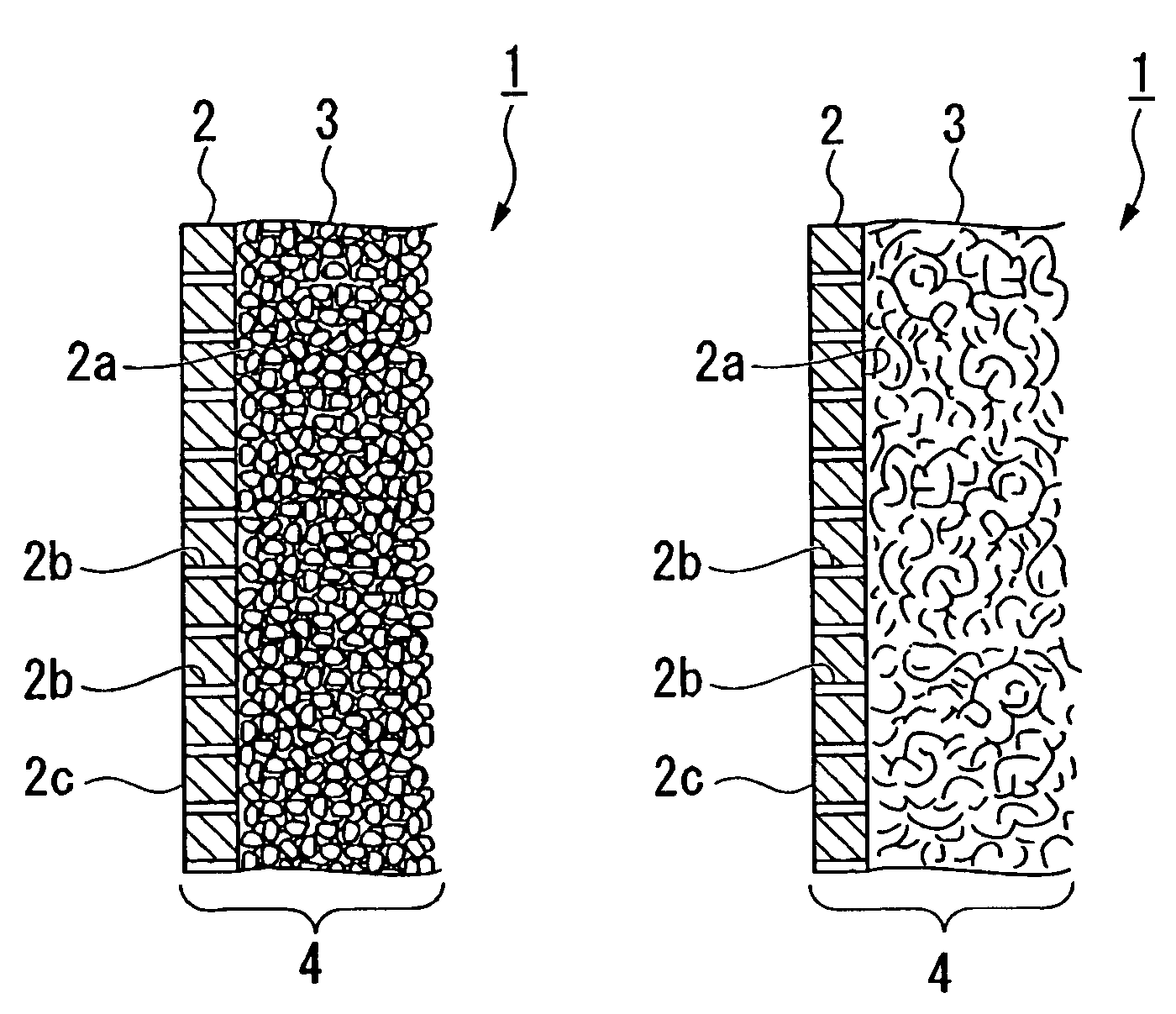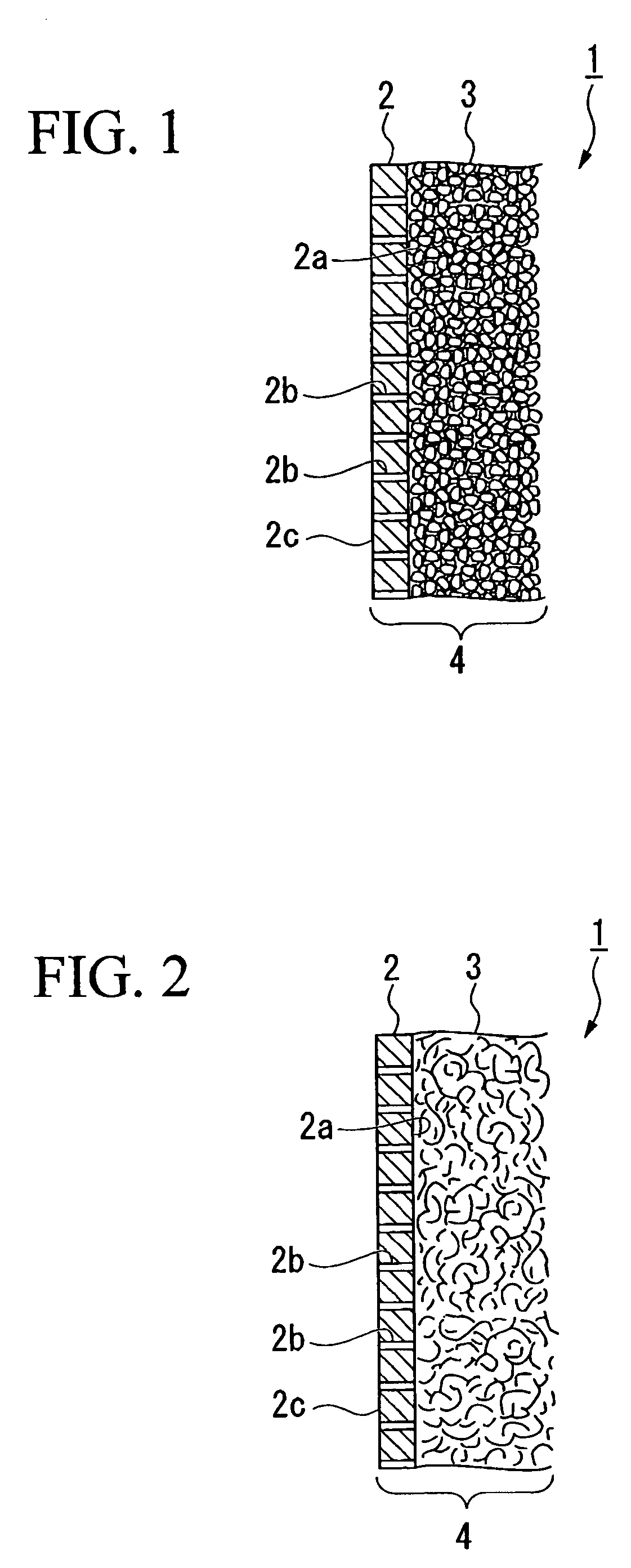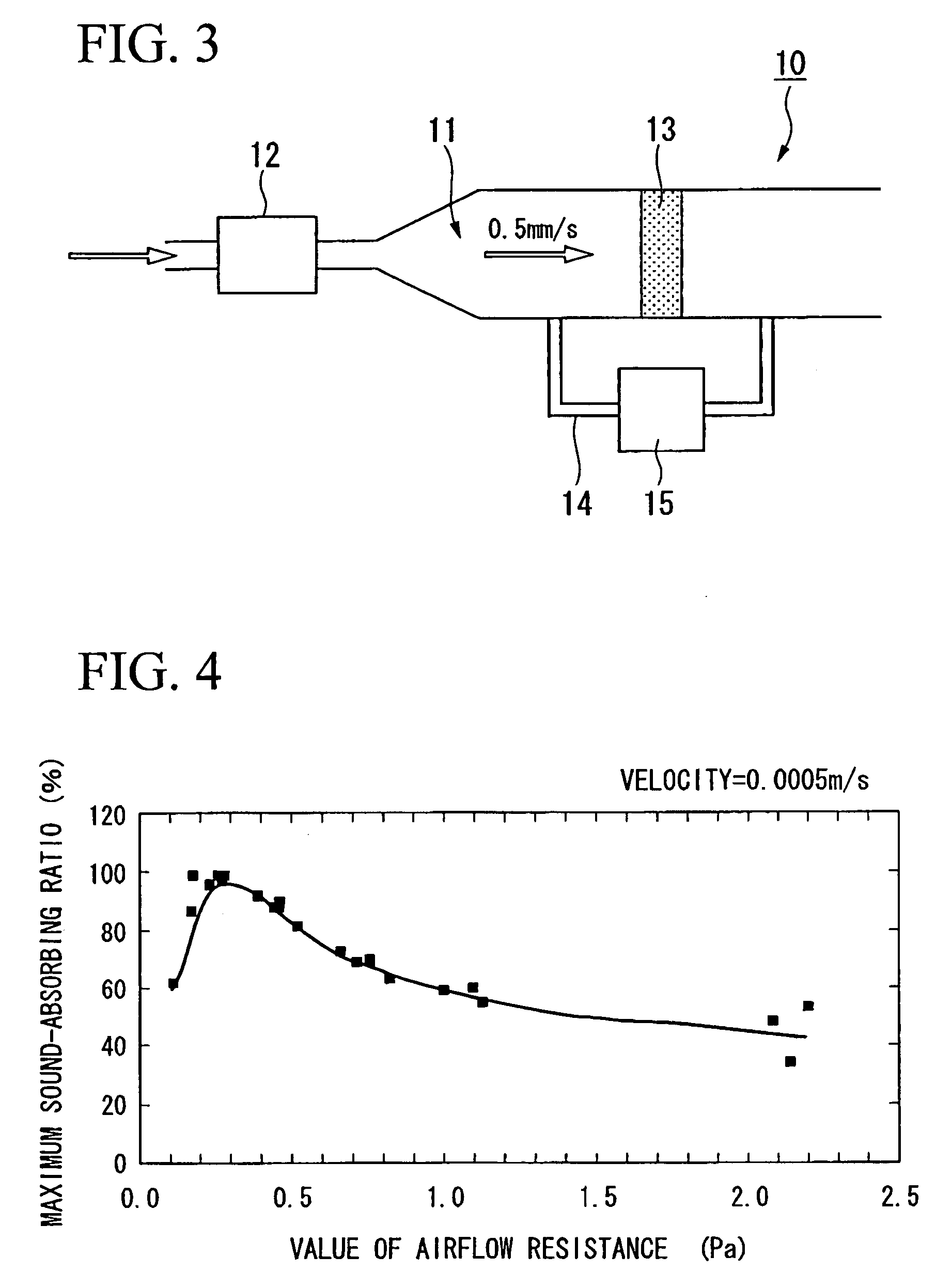Sound-absorbing panel and production method of the same
a technology of sound-absorbing panels and production methods, which is applied in the direction of walls, flooring, instruments, etc., can solve the problems of not being able to obtain a sound-absorbing plate, the relationship between the percentage of void space and the maximum sound-absorbing coefficient is not uniform or constant, and it is not always possible to achieve a sound-absorbing plate. , to achieve the effect of easy replacement or replacement of only porous veneers, easy design changes, and increased sound-absorbing panels
- Summary
- Abstract
- Description
- Claims
- Application Information
AI Technical Summary
Benefits of technology
Problems solved by technology
Method used
Image
Examples
example 1
[0081]A porous veneer which has 30.9% aperture ratio is produced by forming pierced apertures of 70 μm diameter (0.07 mm) with 0.12 mm intervals between them by applying sandblast on a veneer which is a stainless veneer of 50 μm (0.05 mm) thickness prepared beforehand and on which design is processed beforehand.
[0082]Next, as the porous sound-absorbing base material, a glass wool of 50 mm thickness (product name: glass wool 32K, produced by ASAHI FIBER GLASS Co., Ltd) was prepared and the panel main body was formed by adhering this porous sound-absorbing base material to the porous veneer. The value of the airflow resistance of the panel main body was 0.3 Pa. The sound-absorbing panel of the example 1 is produced in such manner.
[0083]With respect to the sound-absorbing panel of the example 1, normal incidence sound-absorbing characteristics are measured in the case of setting the thickness of the backside air layer to be 0 mm. FIG. 7 shows the results. FIG. 7 shows normal incidence ...
example 2
[0085]The porous veneer was produced in the same manner as the example 1 except for processing an etching on the veneer.
[0086]Next, as the porous sound-absorbing base material, an aluminum sheet of 1 mm thickness (product name: Altone, produced by NICHIAS Corporation) was prepared and the panel main body was formed by adhering this porous sound-absorbing base material to the porous veneer. The value of the airflow resistance of the panel main body was 0.2 Pa. The sound-absorbing panel of the example 2 is produced in such a manner.
[0087]With respect to the sound-absorbing panel of the example 2, normal incidence sound-absorbing characteristics are measured in the case of setting the thickness of the backside air layer to be 150 mm. FIG. 8 shows the results. FIG. 8 shows normal incidence sound-absorbing characteristics measured in the case of applying only the porous sound-absorbing base material of 1 mm thickness (product name: Altone, produced by NICHIAS Corporation) as well.
[0088]A...
example 3
[0089]A porous veneer which has 30.9% aperture ratio is produced by forming pierced apertures of 70 μm diameter (0.07 mm) with 0.12 mm intervals between them by applying EB (Electron Beam) processing on a veneer which is a stainless veneer of 50 μm (0.05 mm) thickness prepared beforehand and on which a design is processed beforehand.
[0090]Next, as the porous sound-absorbing base material, an aluminum sheet of 1 mm thickness (product name: Altone, produced by NICHIAS Corporation) was prepared and the panel main body was formed by adhering this porous sound-absorbing base material to the porous veneer. The value of the airflow resistance of the panel main body was 0.2 Pa. The sound-absorbing panel of the example 3 is produced in such manner.
[0091]With respect to the sound-absorbing panel of the example 3, normal incidence sound-absorbing characteristics are measured in the case of setting the thickness of the backside air layer to be 150 mm. FIG; 9 shows the results. FIG. 9 shows norm...
PUM
| Property | Measurement | Unit |
|---|---|---|
| aperture diameters | aaaaa | aaaaa |
| radius | aaaaa | aaaaa |
| radius | aaaaa | aaaaa |
Abstract
Description
Claims
Application Information
 Login to View More
Login to View More - R&D
- Intellectual Property
- Life Sciences
- Materials
- Tech Scout
- Unparalleled Data Quality
- Higher Quality Content
- 60% Fewer Hallucinations
Browse by: Latest US Patents, China's latest patents, Technical Efficacy Thesaurus, Application Domain, Technology Topic, Popular Technical Reports.
© 2025 PatSnap. All rights reserved.Legal|Privacy policy|Modern Slavery Act Transparency Statement|Sitemap|About US| Contact US: help@patsnap.com



